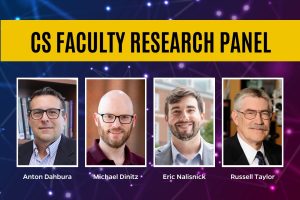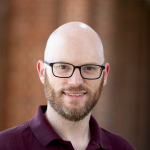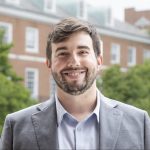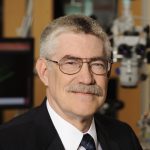
Faculty will present on their own research and areas of specialty and answer questions you might have on how to apply your degree to the broader world of computer science, at Hopkins and beyond.
Learn more about the faculty presenting:
 Anton Dahbura
Anton Dahbura
Anton “Tony” Dahbura is the executive director of the Johns Hopkins University Information Security Institute, co-director of the Institute of Assured Autonomy, and an associate research scientist in computer science. His research focuses on security, fault-tolerant computing, distributed systems, and testing. He also leads multiple student group research projects for sports analytics.
 Michael Dinitz
Michael Dinitz
Michael Dinitz is an associate professor of computer science with a secondary appointment in the Department of Applied Mathematics and Statistics. An expert in theoretical computer science, he is known for his research on approximation algorithms, online algorithms, distributed algorithms, and the theory of networking.
 Eric Nalisnick
Eric Nalisnick
Eric Nalisnick is an assistant professor of computer science at the Johns Hopkins University. In his work, he aims to build safe and robust intelligent systems; to this end, he develops statistical machine learning methods that allow such systems to quantify their uncertainty and to interact with human experts. His research also applies these methodological innovations to problems in health care, computer vision, and sign language processing.
 Russell Taylor
Russell Taylor
Russell H. Taylor is a John C. Malone Professor of Computer Science and the director of the Laboratory for Computational Sensing and Robotics. Taylor’s research interests include robotics, human-machine cooperative systems, medical imaging and modeling, and computer-integrated interventional systems. He is known as the father of medical robotics.